1897 – 1914
With the approach of the 20th century, the great ships of the world had evolved rapidly. No longer could one see much resemblance with the old sailing vessels – no clipper bowsprits and no sailing masts. The steamship had by now established its place in the world, and the nation that operated the greatest liners was Great Britain. However, a new rival was gathering strength on the European continent.
In 1871, the many Germanic states stood united as one German empire. This new nation, with its great territories, population and natural resources soon found itself as one of the most powerful in Europe. 18 years later, in August 1889, Germany’s young Kaiser Wilhelm II attended a British naval review. In the midst of cruisers and dreadnoughts, there was one ship in particular that captured the Kaiser’s interest. She was the new White Star liner Teutonic. Fascinated by this great ship’s size and amenities, the Kaiser is said to have remarked ‘We must have some of these’.
There is no doubt that the Kaiser realised what great national symbols such ships would be for his empire. He returned to Germany with the intention of building German liners to show the world the capability of the German Empire. And what would be a better way to do this, than to capture the famous Blue Riband into German hands? But it would take them some years to do so. In Germany, there were two major transatlantic shipping companies: The Hamburg-Amerika Line and the Norddeutscher Lloyd (North German Lloyd). Neither of these lines had up until now shown any interest in operating large liners. But the steadily growing immigration traffic and the wishes of the Kaiser soon changed their minds.
Norddeutscher Lloyd was the company that took the first step. The Kaiser wanted Germany’s ships to be the greatest ever, and he wanted German shipbuilders to build them. Norddeutscher Lloyd therefore approached the Vulcan Shipyards at Stettin. With them they placed the order for what would become the very first German superliner.
On May 4th 1897, the new ship was ready for its launch. The Kaiser himself was present, and the ship was named Kaiser Wilhelm der Grosse after his grandfather. The new ship would set a new style for ocean liners. She was the largest and longest liner afloat. She would have been the biggest ever had it not been for the Great Eastern of 1860. The most striking feature of the Kaiser Wilhelm der Grosse was her four funnels, the first ship ever to sport such a quartet that for the next decade would be the symbol of size and safety. To give her record-breaking speed, the ship was fitted with reciprocating engines capable of developing some 31,000 horsepower.
But the thing that was really groundbreaking was the fashion of her interior design. For the first time in history, one single designer was responsible for the decorating of an entire ship. On the Kaiser Wilhelm der Grosse, as well as on her three subsequent sisters, the designer’s name was Johannes Poppe. His style of interiors was of a new kind, and it would be reflected in many German liners to come. Favouring baroque revival, Poppe created an atmosphere that had no match in decoration. Public rooms were given high ceilings and rich ornate carvings. His taste for grandiosity seemed to know no limits, and it was almost as if he had tried to gild the whole ship. Nevertheless, the travelling public enjoyed the new Kaiser, and she quickly became a very popular ship. Furthermore, as with the Kaiser’s ideal Teutonic, the Kaiser Wilhelm der Grosse had been built with a possible war in mind. Should it ever be necessary, the ship could be fitted with guns to serve as an auxiliary cruiser.
By the autumn of 1897, the Kaiser Wilhelm der Grosse was finally ready for her maiden voyage. Her engines did not fail her, and she managed to break both the east- and westbound records, set by the Cunarder Lucania in 1894. For the first time in history, the fabled Blue Riband was in German hands. Great Britain was in a state of shock. How could their ocean supremacy have been surpassed by a nation that was not yet 30 years of age? The White Star Line soon took back some lost honour though. In 1899, the second Oceanic was launched. She was the longest ship so far, even exceeding the length of the Great Eastern. Two years later, the Great Eastern’s tonnage was exceeded by the Celtic at 21,035 tons. But the Blue Riband would not be returned to Britain before the Mauretania and Lusitania entered service in 1907.
During this time, the Germans were the fastest on the North Atlantic run. The Kaiser Wilhelm der Grosse lost the title to Hamburg-Amerika’s Deutschland in 1900, but the Kaiser’s sister ship Kronprinz Wilhelm took it back in 1902. The following year the Deutschland bettered her performance and was once again awarded the Blue Riband. The next to possess it was to be the Lusitania. The third ship of Norddeutscher Lloyd’s Kaiser-class, the Kaiser Wilhelm II, held the eastbound record between 1904 and 1907.
But these ships did not escape their share of bad fortune. On November 21th 1906, the Kaiser Wilhelm der Grosse was rammed off Cherbourg by the British steamer Orinoco, and was badly damaged. The accident resulted in the loss of five passengers. To make matters worse, the fast technological evolution of steamships soon made Norddeutscher Lloyd’s express steamers outdated. Cunard’s Lusitania and Mauretania outmatched their German rivals on all fields, and when White Star’s Olympic entered service in 1911, luxury on the high seas was taken one step further. As a result, the Kaiser Wilhelm der Grosse was rebuilt in 1913 to carry Third Class passengers only. Her glory was fading.
Nevertheless, the great German liners continued to serve as symbols of their nation. Although she was not a state-of-the-art ocean liner anymore, the swift ocean greyhound that had shown the world what technology the German Empire possessed still awoke pride with the German people. But these emotions that had created the great liners would soon escalate into a global war, in which many of the great liners would meet their fate. This war had in fact been anticipated for quite some time before it actually broke out. As early as 1908, German ship captains carried a special book that contained instructions of what to do in the event of sudden war. Across the world, supply-ships carrying weapons and provisions were ready to convert merchant vessels into armed auxiliary cruisers.
In 1914, the First World War broke out. The Kaiser Wilhelm der Grosse was requisitioned and turned into an armed cruiser, painted in grey and black. Her commander at the time, Captain Reymann, operated not only under the rules of war, but also the rules of mercy. He sank three ships, the Tubal Cain, the Kaipara and the Nyanza, but only after taking their occupants on board the Kaiser. Further south in the Atlantic, the Kaiser Wilhelm der Grosse encountered two passenger liners; the Galician and the Arlanza. Captain Reymann’s first intention was to sink both vessels, but as he discovered that they had many women and children on board, he let them go. In this early stage of the war, it was thought that it could be fought in a chivalrous fashion. However, soon it was to become a total war and ships would no longer be warned before fired upon.
As the Kaiser approached the west coast of Africa, her coal bunkers were getting empty and needed refilling. She stopped at Rio de Oro, a Spanish colony, where German and Austrian colliers started the task of refuelling her. The task of coaling was still going on on August 26th, when suddenly the British cruiser H.M.S. Highflyer appeared. Captain Reymann quickly prepared his ship and crew for battle, and steamed out to engage the enemy after he had disembarked his prisoners of war. A fierce battle took place, but came to a sudden end when the Kaiser Wilhelm der Grosse ran out of ammunition. Rather than let the enemies capture his ship, Captain Reymann ordered her sunk with dynamite, which was already in position should this situation ever arise. When detonating, the explosives tore up a massive hole and the Kaiser rolled over onto her side and sank. Captain Reymann managed to swim to shore, and he made his way back to Germany by working as a stoker on a neutral vessel.
The great liners of the world were soon found unsuitable as auxiliary cruisers, mainly because of their vulnerability and great fuel consumption. They were soon given either trooping or hospital duties instead.
Specifications
- 655 feet (200.1 m) long
- 65.8 feet (20.1 m) wide
- 14,349 gross tons
- Reciprocating engines turning two propellers at 31,000 horsepower
- 22 knot service speed
- Passenger capacity of 1,970 people

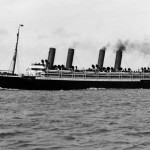
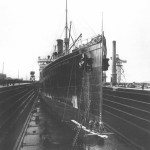
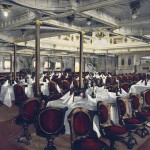
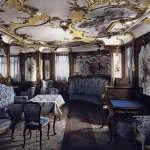
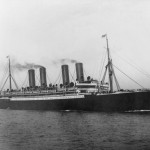
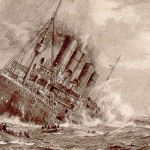
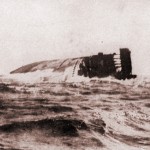
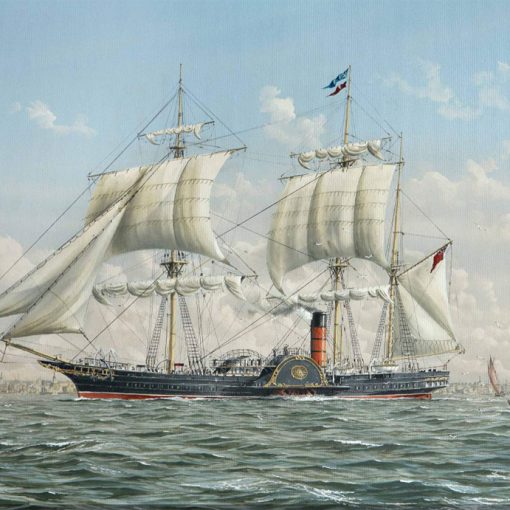
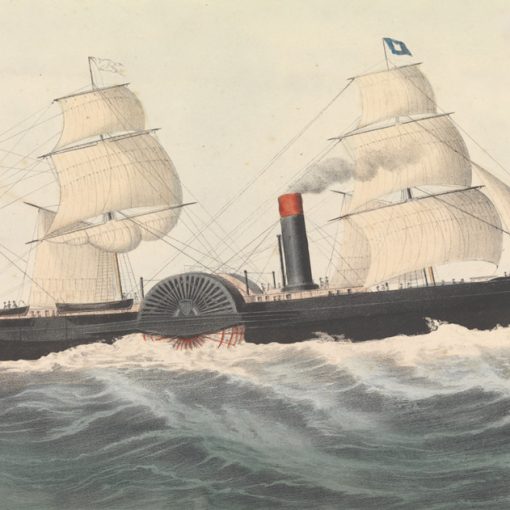
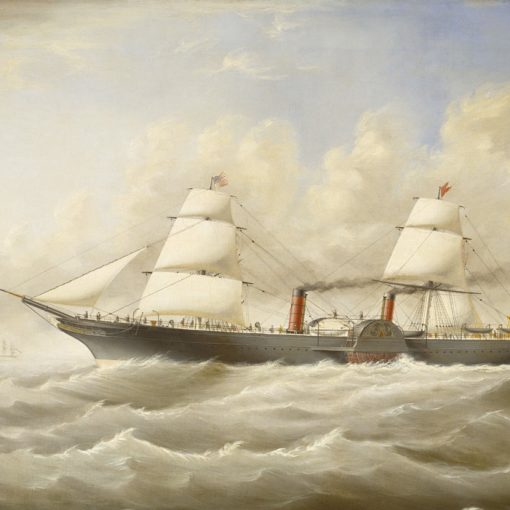
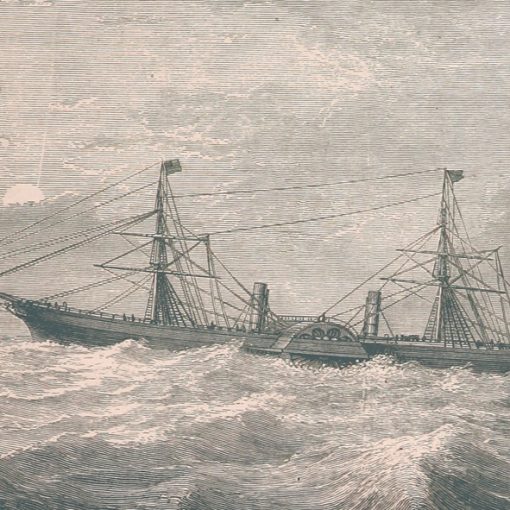
One thought on “Kaiser Wilhelm der Grosse”
My grandfather( Anton W Bosch) came over on the Kaiser Wilhelm der Grosse on May 31, 1899. He came over on with his father George W Bosch and mother and two brothers. Can this be verified? Can I get a passenger listing or any other information?